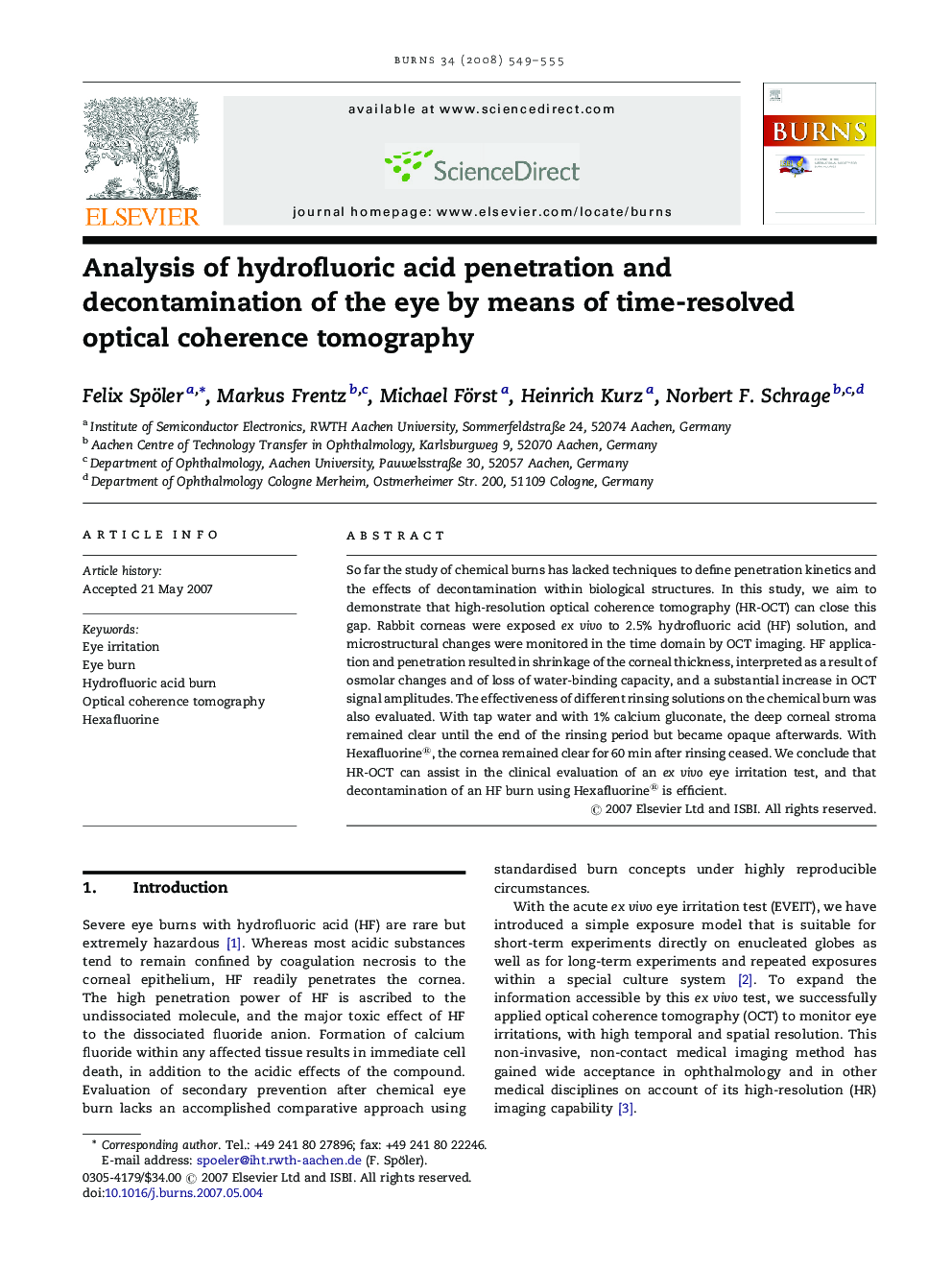| Article ID | Journal | Published Year | Pages | File Type |
|---|---|---|---|---|
| 3105526 | Burns | 2008 | 7 Pages |
So far the study of chemical burns has lacked techniques to define penetration kinetics and the effects of decontamination within biological structures. In this study, we aim to demonstrate that high-resolution optical coherence tomography (HR-OCT) can close this gap. Rabbit corneas were exposed ex vivo to 2.5% hydrofluoric acid (HF) solution, and microstructural changes were monitored in the time domain by OCT imaging. HF application and penetration resulted in shrinkage of the corneal thickness, interpreted as a result of osmolar changes and of loss of water-binding capacity, and a substantial increase in OCT signal amplitudes. The effectiveness of different rinsing solutions on the chemical burn was also evaluated. With tap water and with 1% calcium gluconate, the deep corneal stroma remained clear until the end of the rinsing period but became opaque afterwards. With Hexafluorine®, the cornea remained clear for 60 min after rinsing ceased. We conclude that HR-OCT can assist in the clinical evaluation of an ex vivo eye irritation test, and that decontamination of an HF burn using Hexafluorine® is efficient.
